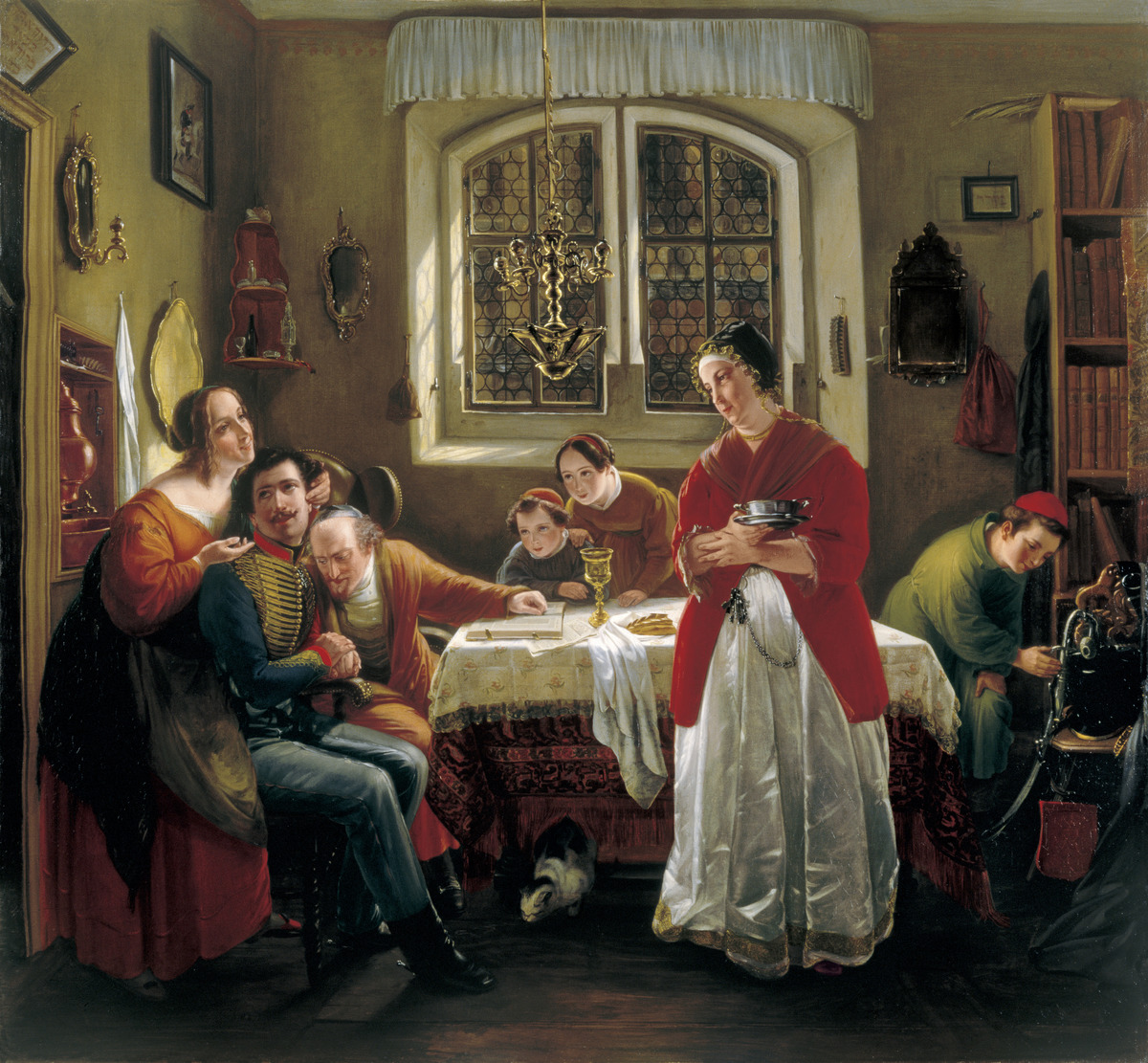Source

Source: Gift of Richard and Beatrice Levy, The Jewish Museum, New York. Available online at:https://thejewishmuseum.org/collection/1533
Moritz Daniel Oppenheim of Hanau (1800–1882) was the first German Jew to become a professional artist and to achieve general recognition while remaining religiously observant. Although this genre scene takes its theme from patriotic German art following the so-called Wars of Liberation against Napoleon in 1813–14 (see, for instance, similar works by Johann Peter Krafft), Oppenheim’s painting is unique in incorporating a Jewish dimension that adds both poignancy and ambiguity. The scene celebrates not only the patriotic commitment of both the young Jewish volunteer and his family but also the family’s adherence to Jewish religious tradition. That the young soldier has, against Jewish customs, traveled on the Sabbath and interrupted the family’s observances has not lessened their joy at his safe return. The father’s tenderness is perhaps tempered by his attention to the Iron Cross earned by his son, which may reveal pride but also concern about the Christian symbol. Oppenheim renders the figures, the furnishings, and the religious objects in loving detail. The Vormärz period was an era of partial emancipation for Jews in many German states, but the 1820s and 1830s, in particular, also saw the erosion of some recent gains in legal status. Opponents of German Jews’ integration into a Christian-majority society and polity often argued that Jews could not serve in the military and thus fulfill one of the primary duties upon which claims to citizen rights were based. One of the leading counterarguments was the patriotic response of German Jewish communities in the wars of 1813–14. Many German Jews volunteered to join the fight against Napoleon, serving with distinction and in many cases sacrificing their lives for the fatherland. Oppenheim’s painting is a powerful endorsement of Jewish emancipation, one that emphasizes their full patriotic commitment, as evidenced by the portrait of Frederick the Great (II) of Prussia (on horseback) on the left wall and by the fascination of the volunteer’s younger brother with his saber and accoutrements. It is not insignificant that the painting originated as a gift to the principal Jewish defender of Jewish rights in the Vormärz period, Gabriel Riesser (1806–1863), who went on to become vice president of the Frankfurt National Assembly and to defend Jewish civil and religious equality there during the Revolution of 1848–49.

Source: Gift of Richard and Beatrice Levy, The Jewish Museum, New York. Available online at:https://thejewishmuseum.org/collection/1533
This work has been identified as being free of known restrictions under copyright law, including all related and neighboring rights.